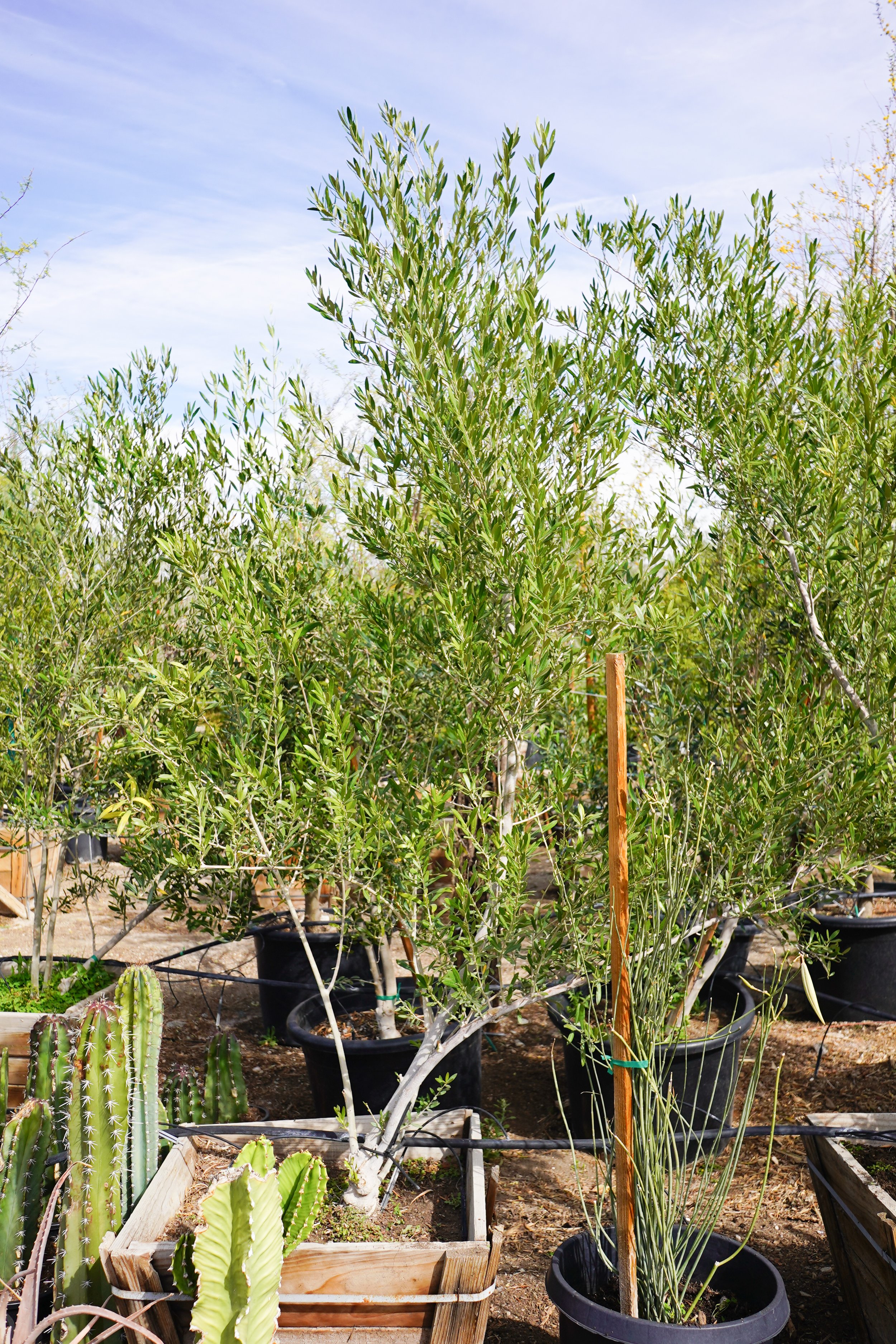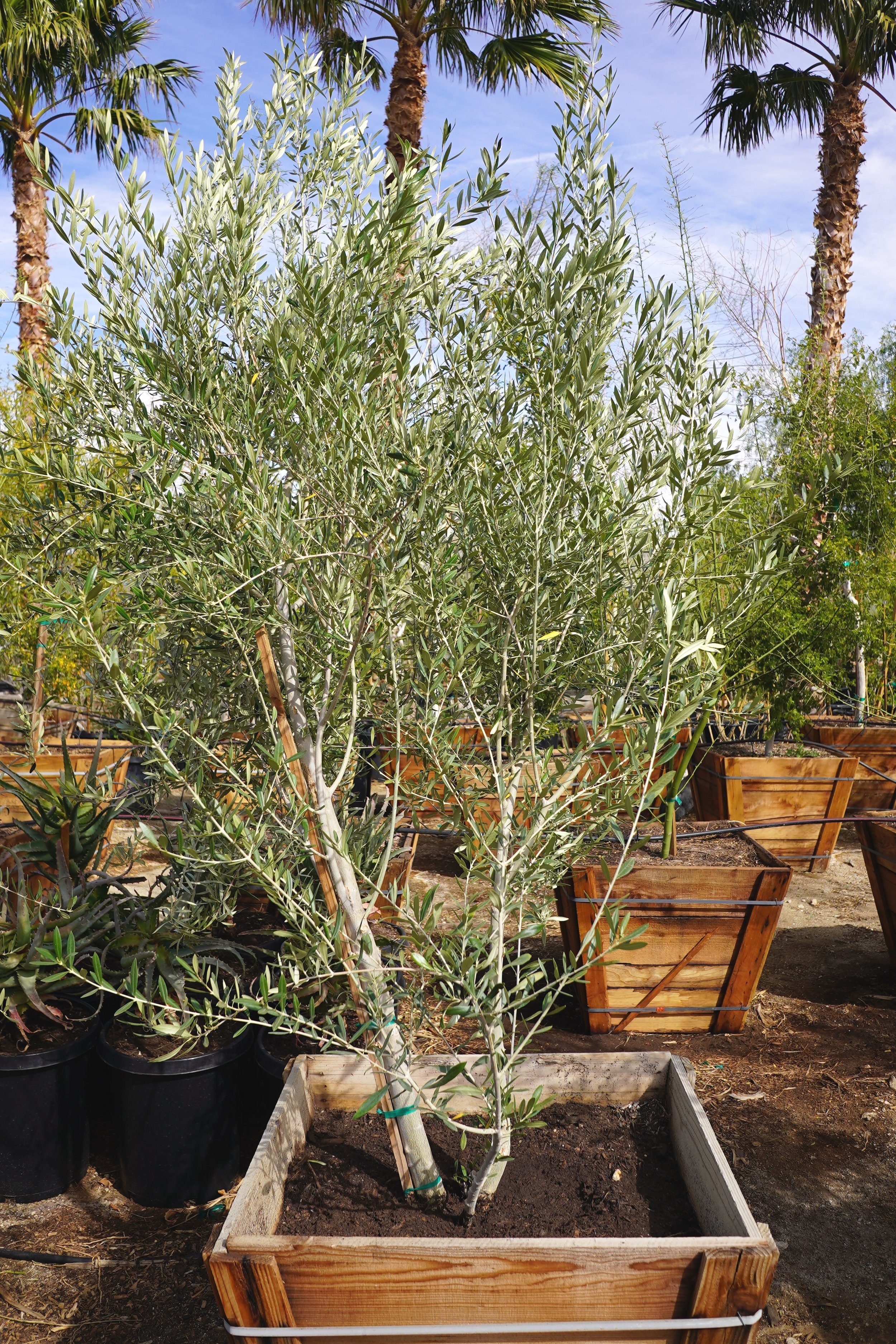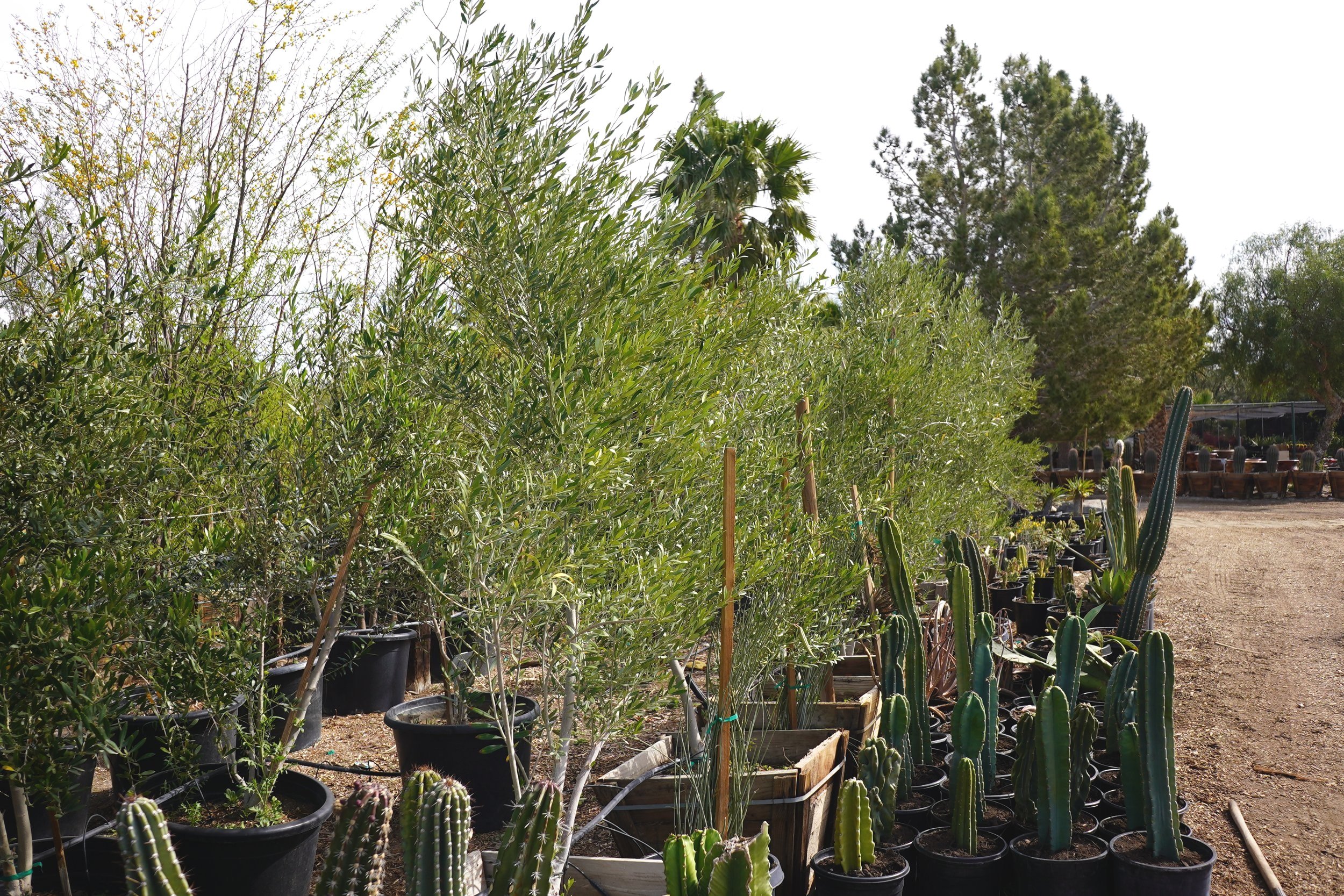Olive Tree
One of the oldest cultivated trees in the world, the olive tree has been intertwined with history, religion, and the culinary world for thousands of years.
Hailing from the Mediterranean, it has become a familiar sight in many parts of California, where it enjoys similar conditions to its origin, such as warm and dry weather.
Graceful, tough, and drought-tolerant, it’s no wonder that the olive tree has enjoyed popularity in the Palm Springs region and beyond for a very long time.
Botanical name: Olea europaea
Other names: Common olive tree, European olive tree
Olive tree in a 24” box at the nursery
TABLE OF CONTENTS
Olive Tree Appearance
Evergreen tree with a very distinct appearance.
The olive branch, with its thin, long stem and multiple small, lance-shaped leaves has been depicted as a symbol of peace throughout history.
Muted gray-green leaves that are long and narrow, typically measuring 2-4 inches long and 0.5-1 inch wide.
The thin trunk will become wide and rough, twisting and turning as it matures, giving the olive tree its signature gnarled look.
Commonly 15-40 feet in height, although there are some varieties and very old specimens that are taller.
Clusters of small, white flowers with a pleasant aroma followed by green olives that turn to dark purple as they ripen. These olives are widely used for creating olive oil and pickled olives.
Olive Tree Landscaping Tips
Olive trees add sophistication, grace, and an old-world charm to the landscape.
Moderately slow-growing, usually 1-2 feet a year.
Grows a large root system, which helps it to be drought tolerant.
Very resilient and withstands strong pruning. A good candidate for training as a topiary or espalier.
Olive trees are self-fertile and typically start to fruit in 3-5 years.
Most of the olive trees at our nursery are fruitless. The majority of our clients prefer fruitless olive trees so that they don’t have to clean up after olives that fall off the tree and possible stains on the ground. If you’d like an olive tree that produces olives, please let us know, preferably before visiting the nursery.
Olive Tree Origin
Olive trees are native to the Mediterranean, in regions that are dry with mild winters and warm summers.
Olive Tree Care
Soil: Loose, well draining soil that is moderately fertile.
Temperature: Can withstand temperatures down to 20 degrees for a short period of time. Very heat-tolerant.
Water: Regular deep watering until the olive tree is established, allowing the top of the soil to dry out. Once mature, occasional, deep watering.
Sun: Full sun. Partial shade is ok in Palm Springs area
Olive Tree Problems
Pests: Olive trees have minimal pests, which include aphids and olive fruit flies.
For aphids, blast them off with water if the infestation is light. Otherwise, use horticultural oil or soapy water.
For olive fruit flies, apply Bacillus thuringiensis (Bt), a biological pesticide.
Whenever using any kind of pesticide, be aware that it can damage the plant if the temperatures are in the 80s or above.
Signs of overwatering: Root rot, drooping leaves
Signs of too little water: Browning and drying leaves
Signs of too much sun: Leaf burn, fading color
Signs of too little sun: Etiolation, stunted growth
Olive Tree Propagation
The easiest way to propagate an olive tree is through cuttings. Plant 1-2 foot long cutting in soil. Keep soil moist until it's well established.
FAQ
HOW MUCH DOES an olive tree COST?
At our nursery, olive trees cost $120 for a 15-gallon container, $250 for a 24-inch box, $750 for a 36-inch box, and $2,500 for a 48-inch box.
Prices are subject to change. Please contact us for the most up-to-date information on pricing. We may have larger sizes available. We provide installation services locally at a separate cost.
Are olive trees drought tolerant?
Yes, olive trees are drought tolerant once mature.
How fast do olive trees grow?
Olive trees grow moderately slowly, usually 1-2 feet a year.
Summary
| SIZE (H X W) | 40 feet |
|---|---|
| FLOWER COLOR | White |
| FLOWER SEASON | Spring to Summer |
| EXPOSURE | Full Sun to Partial Sun |
| WATER | Low |
| GROWTH RATE | Moderate |
| HARDINESS | 20º F, USDA Zone 9 |
| PRUNING | None |


